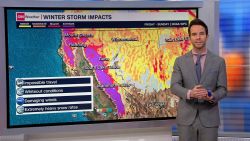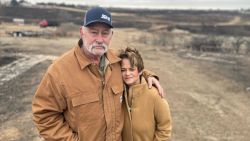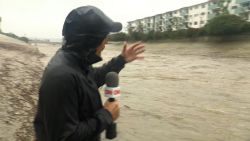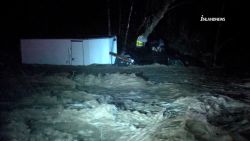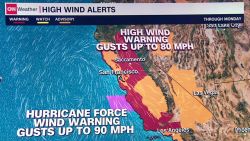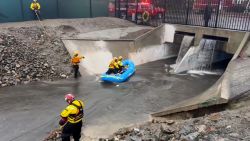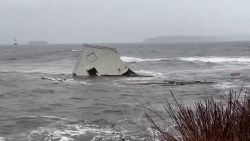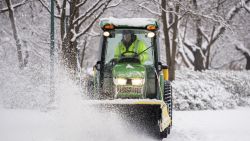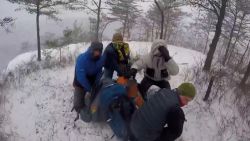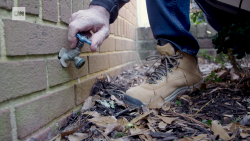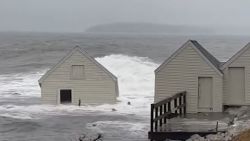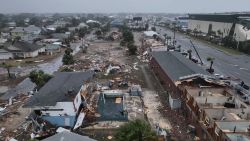Leaving Mexico’s Yucatan Peninsula on Wednesday, Hurricane Delta is expected to strengthen back into a major storm as it makes its way toward the same area of the US Gulf Coast still picking up the pieces from Hurricane Laura.
A hurricane watch was issued for parts of the coast from High Island, Texas, eastward to Grand Isle, Louisiana, and a storm surge watch is in effect from High Island to the Alabama-Florida border, according to the National Hurricane Center.
“Delta strengthening while moving over the south-central Gulf of Mexico,” the center said Wednesday evening. “Life-threatening storm surge and damaging winds increasingly likely along portions of the the northern Gulf Coast beginning Friday.”
While the center predicts the storm could strengthen into a Category 3 hurricane Thursday night, cooler water and upper level winds may weaken Delta to a Category 2 by the time it hits the US coast.
Delta’s projected path looks eerily similar to that of Hurricane Laura, which made landfall in Louisiana as a Category 4 storm on August 27, leaving 15 people dead, hundreds of thousands without power and destroying more than 10,000 homes in southwest Louisiana.
“We are still reeling from Hurricane Laura,” Lake Charles Mayor Nic Hunter said in a Facebook post. “Much progress has been made since Laura, but there are still many people going through pain and struggle.”
If Delta makes landfall in Louisiana, it will be the fourth landfall of a named storm this year in the state, something that has never happened.
While some evacuees there are still living in shelters from Hurricane Laura, voluntary evacuations have already begun in several low-lying areas, and some mandatory orders have been issued.
Tropical storm watches were issued in Texas, including Houston and Galveston Bay, and in Louisiana, including New Orleans, Lake Pontchartrain and Lake Maurepas.
Delta made landfall on the Yucatan Peninsula as a a Category 2 storm Wednesday morning, roughly halfway between the resort towns of Cancun and Playa del Carmen in Puerto Morelos, according to the National Hurricane Center.
The hurricane quickly made its way over the peninsula and reemerged in the Gulf of Mexico. A Category 1 storm by Wednesday evening, Delta was about 550 miles south-southeast of Cameron, Louisiana, with maximum sustained winds of 90 mph.
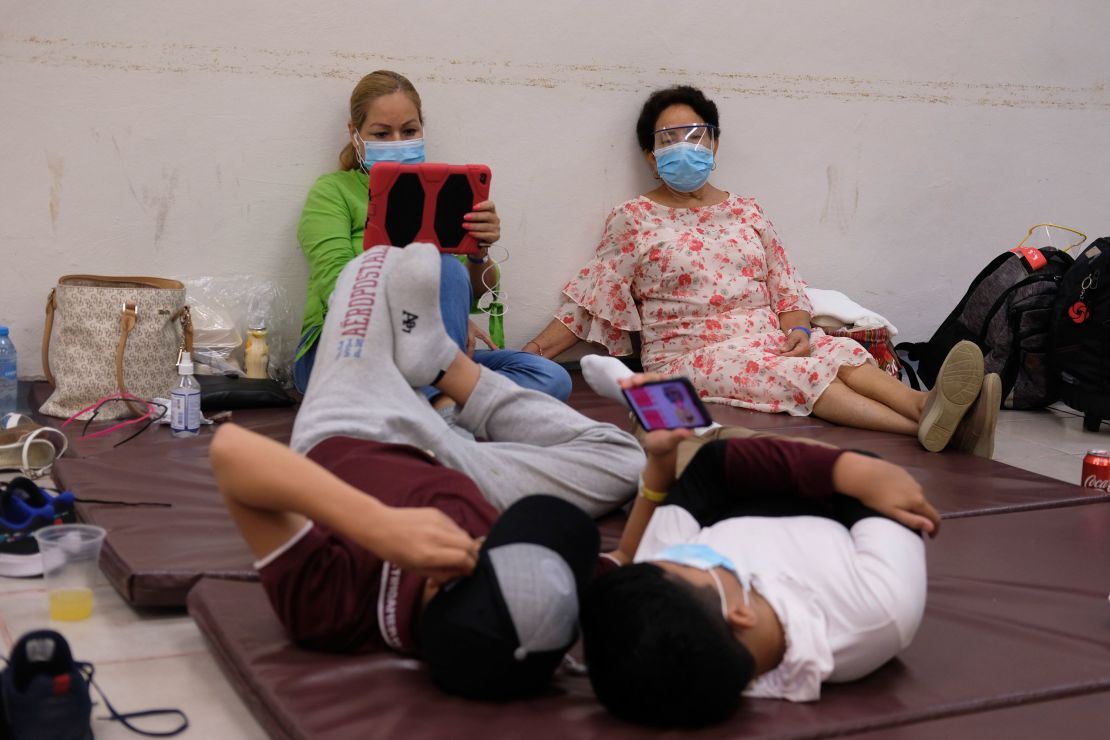
The storm left Mexico’s popular resorts with no known deaths or major damage as of early Wednesday afternoon. More than 39,000 people had evacuated ahead of Delta’s arrival.
Delta is just the latest major storm in one of the busiest hurricane seasons in recent history. When it hits the US in the coming days, Delta will become the 10th named storm to make landfall in the US this season, setting the record for the most in one year. It will be the fifth hurricane to make landfall, the most storms the US has seen since 2005.
States prepare for life-threatening conditions
Gov. John Bel Edwards has declared a state of emergency and requested a pre-landfall Federal Declaration of Emergency, he said in a statement.
“Hurricane Delta is a dangerous storm that will bring strong winds, heavy rain, life-threatening storm surge and flooding to coastal Louisiana, and I am hopeful President Trump will quickly approve my request for a federal emergency declaration,” Edwards said.
Edwards encouraged residents to be prepared for a major hurricane and not focus on its strength. “Everyone in South Louisiana should pay close attention to the weather in the coming days and heed the advice and directions of their local officials,” he said Tuesday.
New Orleans-based Entergy is monitoring the storm and preparing to respond in Louisiana. The utility has been busy with restoration efforts following the devastation Hurricane Laura caused to the distribution and transmission infrastructure.
Entergy announced just last week that it had restored power to all accessible customers in hard-hit southwest Louisiana.
Delta’s life-threatening storm surge, widespread damaging winds and flooding will be significant, said Ben Schott, the head of the National Weather Service in New Orleans.
The earliest the storm will hit is Friday morning, he said. But if the storm slows, it could be as late as Saturday morning. The whole coastline of Louisiana could see tropical storm winds, Schott said.
Louisiana schools throughout the Gulf Coast region will be closed Thursday and Friday.
New Orleans officials said they would continue monitoring the path of Hurricane Delta “minute by minute” to determine whether evacuations were needed.
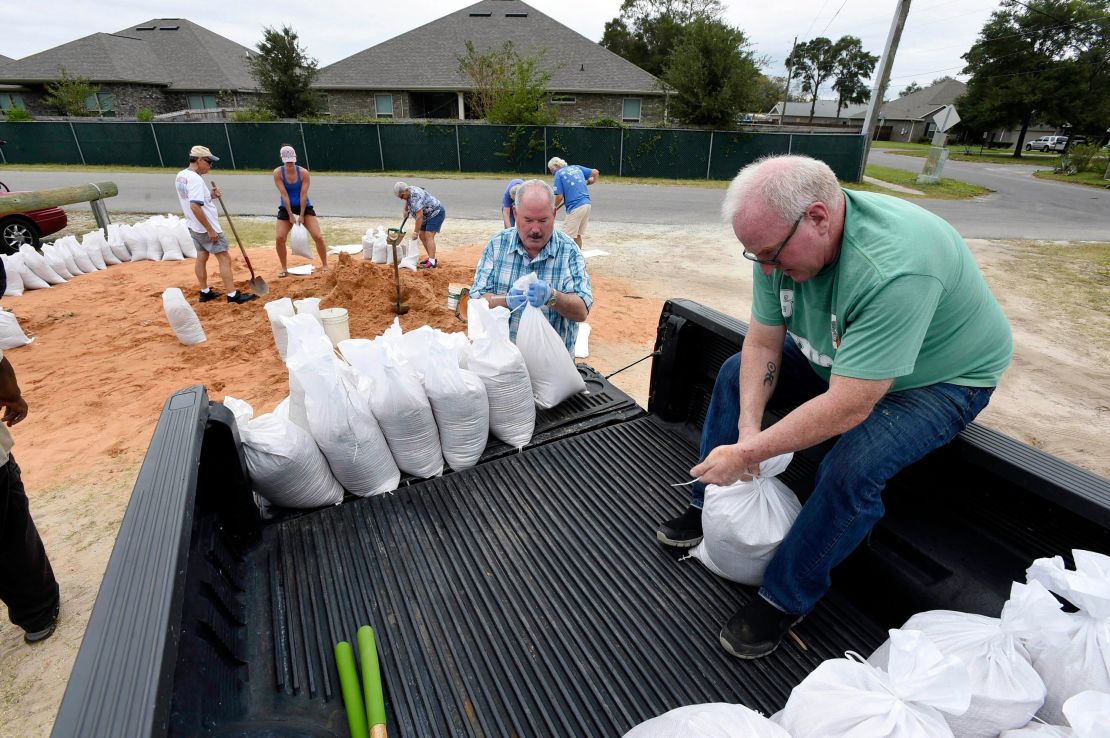
Alabama Gov. Kay Ivey declared a state of emergency Tuesday ahead of the storm to help Alabama begin the preparation process and position the state for a pre-landfall disaster declaration with the Federal Emergency Management Agency.
A mandatory evacuation for tourists at the Alabama Gulf Coast, including Orange Beach, Gulf Shores, Dauphin Island and unincorporated areas of Ono Island and Fort Morgan, is ordered to begin Wednesday morning.
“This is for their safety and well-being, as well as for the safety and well-being of locals who are working to prepare their communities in the event Hurricane Delta tracks more easterly,” Ivey said in a statement.
She said that since the storm is already stronger than Hurricane Sally, which caused widespread destruction to the state when it hit September 16, heavy rains and strong winds are forecast for the area no matter where it makes landfall.
“As residents along the Gulf Coast know all too well, these storms are unpredictable, and I strongly encourage everyone to take Hurricane Delta seriously,” Ivey said.
Mississippi has deployed 160,000 sandbags to low-lying counties and has nine shelters on standby to open if needed, the Mississippi Emergency Management agency tweeted Tuesday.
Along the Gulf Coast, nearly 10% of manned oil rigs have shut down operations ahead of the storm, according to the US Bureau of Safety and Environmental Enforcement, which has activated its Hurricane Response Team. Personnel have been evacuated from at least one rig.
Delta tripled in strength in less than two days
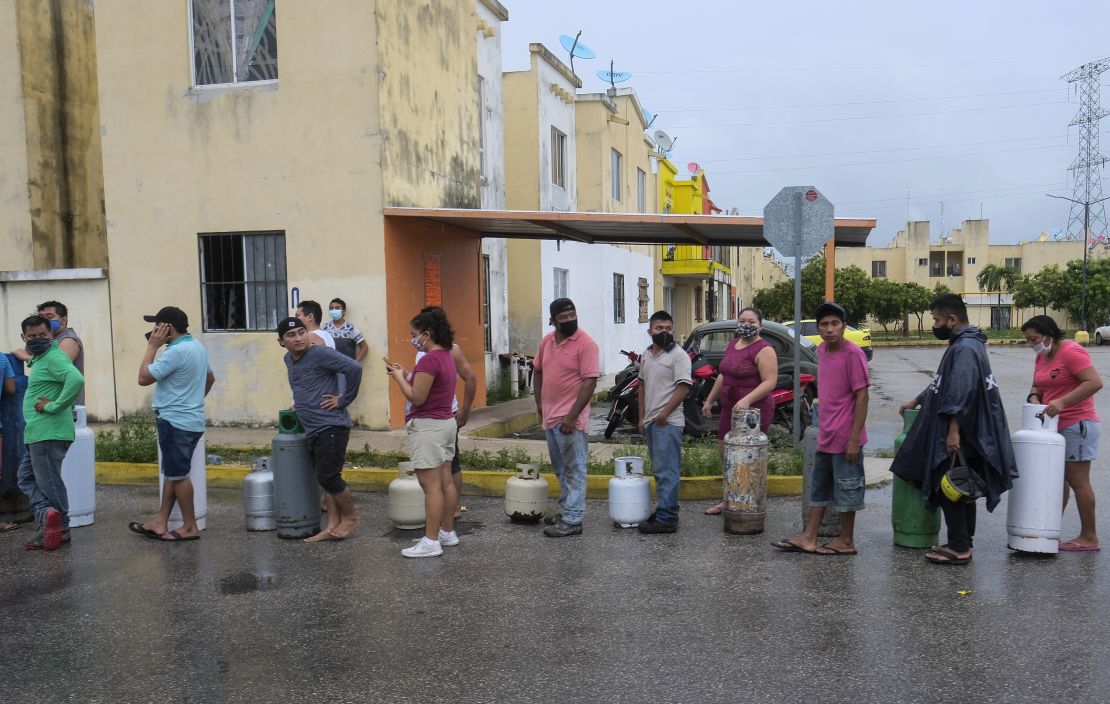
In Mexico, people across the peninsula prepared for the storm by buying supplies at grocery stories, boarding up buildings with plywood and lining up to fill large jugs with water, video from CNN affiliate TV Azteca showed.
Dozens of tourists who were evacuated from their hotels wore masks and sat chatting while they awaited transport. Others were shown waiting for flights out of the area, with many canceled or delayed due to the storm.
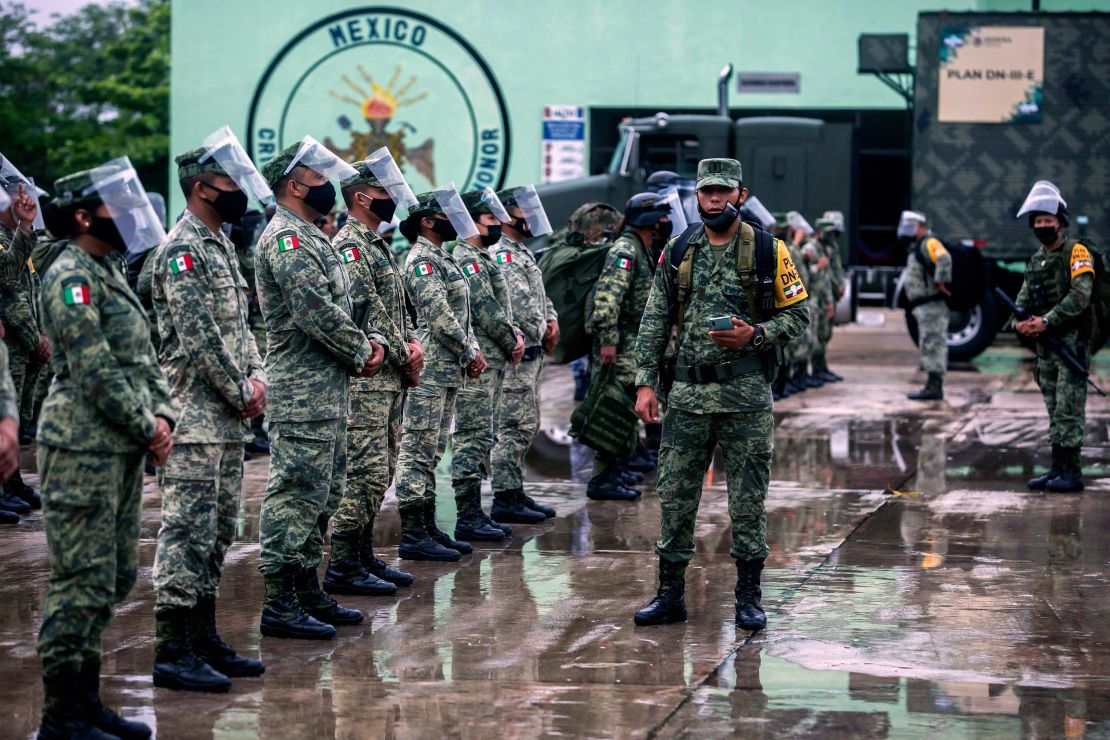
Delta’s wind speed tripled in the span of about 30 hours – growing from a tropical depression with winds of 35 mph Monday morning to a Category 4 storm with winds of 145 mph before weakening. Maximum sustained winds increased by 85 mph in 24 hours – the most in one day so far this year.
The Mexican Army’s Disaster Support Force was activated to help with evacuations and other storm preparations prior to landfall.
More than 700 military personnel and 47 official vehicles had performed security tours, reviewed tributaries and evacuated people most at risk, it said.
CNN’s Dave Hennen, Hollie Silverman, Tina Burnside, Gisela Crespo, Kay Jones, Joe Sutton, Haley Brink and Devon Sayers contributed to this report.


